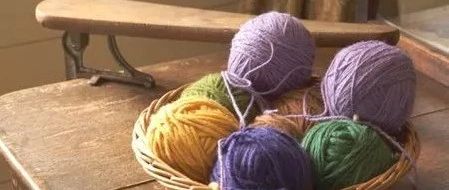
Both wool ball and blind eel are super cute _ (: wool "∠) _
at a depth of several hundred meters, a shark is quietly approaching its prey. It took a fancy to a blind eel. The strange creature, covered with gray and pink flabby skin, didn't look very delicious, but anyway, the shark took a bite.
it turned out to be a wrong decision. After almost a second or two, the shark quickly gave up the idea of eating the blind eel. It loosened its mouth and swam away, with a big fuzzy translucent thing hanging from the corner of its mouth.
(original video source: Massey University)
what happened in the middle?
it is the mucus of the blind eel that defeats the shark. A large amount of thick mucus quickly fills the shark's mouth and blocks their gills, forcing the shark to give up the attack. This mucus may be the most disgusting thing in blind eels, but it is also a fascinating material for scientists.
so thin and so thick
when stimulated, blind eels will first secrete some "raw materials" to produce mucus. These milky secretions are small in weight and may add up to less than a small teaspoon, but when they come into contact with sea water, they quickly turn into nearly a liter of super-large transparent mucus in hundreds of milliseconds.
this is the strength of blind eel mucus: in terms of composition, it is incredibly rare. The 99.996% of the mucus is seawater , and the rest is the protein secreted by the blind eel. Compared with other biological mucus (such as the mucus in our mouths), the protein content in blind eel mucus is three orders of magnitude lower than /strong>.
but at the same time, the texture of blind eel mucus is incredibly "thick". It's so thick that it can be picked up from the water, and it's so thick that it seems to pull constantly.
(feel... Photo Source: NOVA)
Blind eel's "wool ball"
how can such a small amount of protein prop up such a continuous thick texture? The answer lies in a special protein fiber in the blind eel's mucus, which I like to call the blind eel's "wool ball".
(photo source: Douglas Fudge)
these fibers are really very similar to wool balls. When they are first secreted, they are tightly wound small strands (pictured above), and when they gradually unfold in the sea water, they become fibers of amazing length. The diameter of the fiber is only 1-3 microns, while the length is-10-17 cm! These super-long fibers form a network with mucin, which encases a very large amount of sea water, forming jelly-like mucus.
(some "wool ball" fibers intertwined. This picture is a typical photo scam, the color is the result of using a polarized light microscope, the fiber actually has no color. )
Dreaming for a perfect mint bridesmaid dresses to add to your wardrobe? Our collection come in all lengths and style.
the slender fiber gives the blind eel mucus the property of "stretching and thickening", that is, if the mucus is pulled in one direction, it will appear particularly thick, and this property also helps it to hold the shark's gills well.
and it's easy to make it thinner: just rub it. This mass of mucus also has the property of "shear thinning", and the friction inside the fluid will destroy the structure of the fiber network, making the mucus suddenly thinner. Blind eels use this property to get rid of their own mucus. They use their bodies to make a circle and pass through the middle, so that they can fully rub the mucus and avoid sticking all over themselves. Why did the blind eel tie a knot in the face of danger? )
(a blind eel breaking away from the mucus. Source: Lukas B ö nietal)
unfold a "wool ball"
so far, we have some basic understanding of the mucus of blind eels. After seeing so many blind eels and constant mucus, let's take a look at some fresh and lovely little things. The video below shows a small ball of blind eel wool unfolded under a microscope.
if you just soak the "wool balls" in static salt water, they can eventually unfold, but the whole process will be very slow. In the real ocean, these "wool balls" mainly rely on the sticky drag of the current to stretch quickly, and the whole process will be faster if the end of the "wool" is attached to a surface (such as the mouth of a shark).
this video is from a recently published study. The researchers actually observed the unfolding process of the "wool balls" and established a mathematical model to calculate the conditions needed for their rapid expansion. Studying the mucus of blind eels not only enhances our understanding of this strange creature, but also brings new inspiration to material science.
of course, the reason why I write "Blind Eel Wool Ball" is very simple-it's really cute!
(routine blind eel expression)
reference:
https://royalsocietypublishing.org/doi/10.1098/rsif.2018.0710#d3e10148
https://www.theatlantic.com/science/archive/2019/01/hagfish-slime/581002/
http://jeb.biologists.org/content/208/24/4613